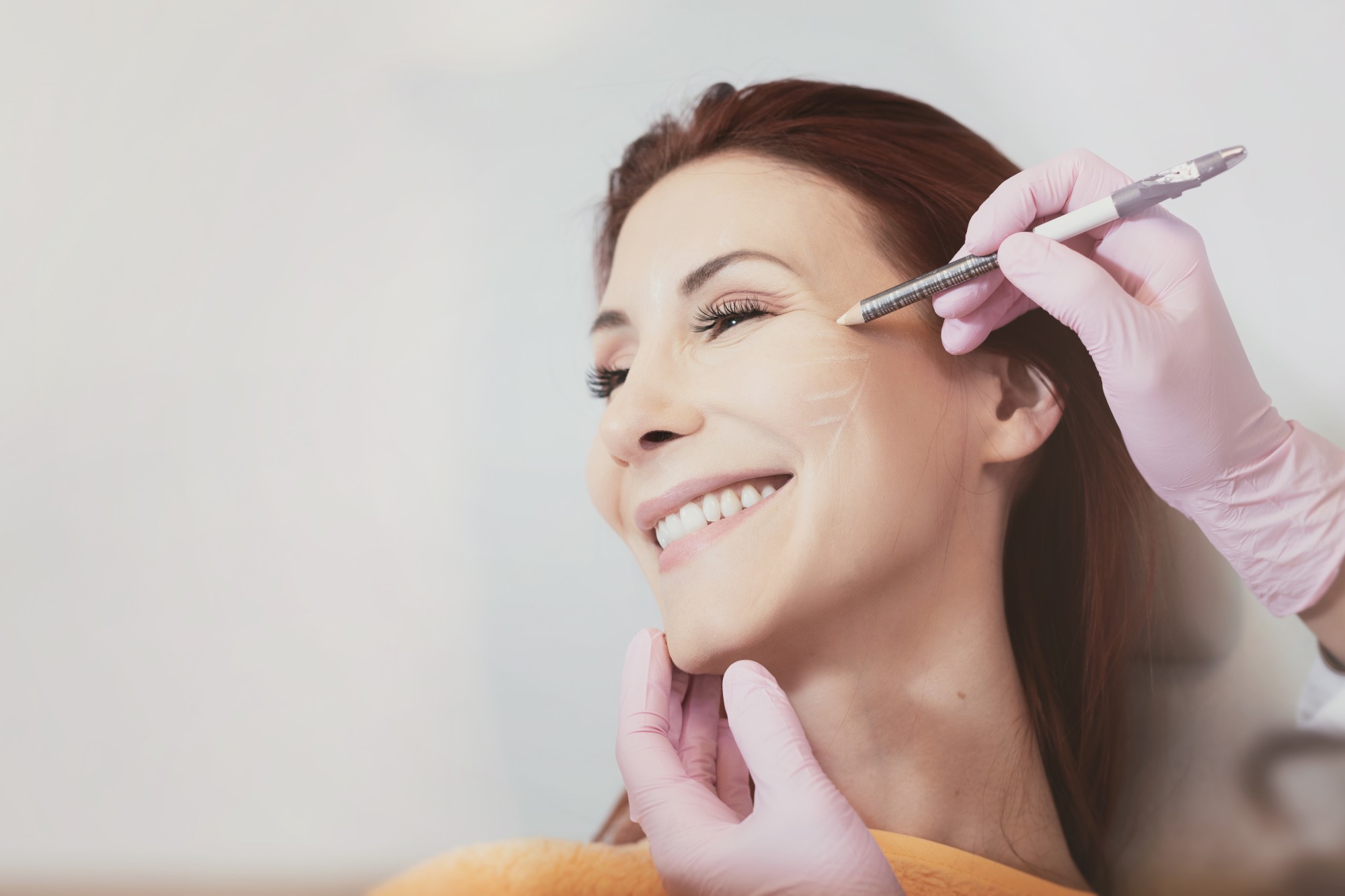Minimally invasive, outpatient

Botox® in Zug
Facial wrinkles become progressively more prominent with age. Over time, our body’s levels of structural proteins naturally decrease, causing tissue to slacken and creating uneven areas. We distinguish between two main types of wrinkles: orthostatic wrinkles are caused by gravity, while mimic wrinkles are the result of facial muscle movement, which gradually leads to the development of small “expression lines.” Patients who are bothered by these age-related changes can benefit from wrinkle treatments specifically designed for their situation: orthostatic wrinkles respond best to fillers (e.g., hyaluronic acid), while mimic wrinkles are usually treated with botulinum toxin (Botox®).
Individual and natural
Preparing for your Botox® treatment
My priority with anti-aging treatments is to give you aesthetically pleasing results that look natural. The media is full of fake “young“ faces that look unnatural and mask-like; I want to give you a fresh, youthful look without taking away the features that make your face unique. Aggressively eradicating every last little line is usually not necessary in order to achieve attractive results; in fact, a few wrinkles are often a good thing, as they symbolize experience and maturity, giving us a certain degree of character and charm.
So prior to treatment, I do a precise analysis of your skin, dividing your face into different sections. Each area gets its own treatment—if necessary, of course. The wrinkles patients most frequently want reduced are “worry lines,” the vertical wrinkles on the forehead that appear when you knit your brows. Other common candidates include horizontal forehead lines (“furrows”) and wrinkles on either side of the mouth (“laugh lines“) or the nose (“bunny lines”).
When doing Botox® therapy, I pay close attention to the individual dynamics of your face; sometimes all a patient needs is a slight weakening of the musculature in one specific area, which indirectly strengthens the opposing musculature. Achieving natural-looking results is all about these nuances. Botox® alone can be used, for example, to lift the eyebrows slightly and counteract a slight droop in the corners of the mouth.
Your personal consultation appointment will also include explaining the process for your treatment in Zug, and clarifying any risks or potential complications.
Overview
Botox® in Zug at a glance
-
Procedure
-
Duration
approx. 10 to 30 minutes (depending on the scope of treatment and the size of the area)
-
Anesthesia
Not needed; numbing cream if desired
-
Rest and recovery
Not necessary
-
Return to work
Immediately
-
Follow-up care
Cool area if necessary
-
Risks
Redness, swelling, bruising (rare)
Procedure
What to expect with Botox® wrinkle treatment
I start by marking the previously defined injection sites on your skin. Additional anesthesia is not usually necessary, since the injections are done using extremely fine needles; if you prefer, I can use a numbing salve on particularly delicate areas to make them less sensitive to pain. After that, I inject the botulinum toxin directly under the skin. As it absorbs into the tissue, it blocks the release of the neurotransmitter acetylcholine, so the muscle stops receiving signals to contract. As a result, the facial muscles relax, and the mimic wrinkles are no longer activated.
It is important to mention that botulinum toxin’s effects develop gradually, so the initial results will only be visible after about five days; Botox® reaches its peak effect after around ten days.
-
What should I keep in mind after treatment?
Botox® does not require extensive recovery time—most patients can go right back to their usual routines immediately after treatment. However, some people may still have redness and slight swelling in the treated area, so it is better not to schedule important events for the day of treatment if possible. In our experience, these subside within a short time; gentle cooling can speed the process along.
Botox® breaks down completely in the body over time, so the effect is not permanent. How long it lasts varies from person to person. As soon as the botulinum toxin has left the body, muscular activity returns to normal, which generally means that the wrinkles become visible again. Treatment can be repeated at regular intervals in order to maintain the effect; most people do this after around four to six months.
-
Additional applications for botulinum toxin
Botox® is primarily known as an anti-aging treatment, but the active ingredient is used in non-cosmetic procedures as well, for example to treat movement disorders or headaches (such as tension headaches or migraines). I frequently treat patients who suffer from debilitating migraines; in my experience, Botox® often helps alleviate their pain and restore their quality of life. Botox® can also be used to treat hyperhidrosis, or excessive sweating.
-
What risks are involved?
Botox® is considered very low-risk and largely painless; any swelling, redness or bruising generally tends to fade quickly. When Botox® is administered by an experienced plastic surgery expert, the risk of serious complications (e.g., signs of paralysis, persistent loss of sensation) is minimal.
Consultation
Individual consultation on wrinkle treatment with Botox®
A personal consultation at my clinic in Zug is essential so that we can discuss the potential benefits of Botox® treatment. Meeting face-to-face allows me to address your individual concerns and understand the particulars of your situation, so that we can work together to create a treatment plan that will help you achieve a natural, rejuvenated look. You can schedule your appointment via telephone or email.
Hours

